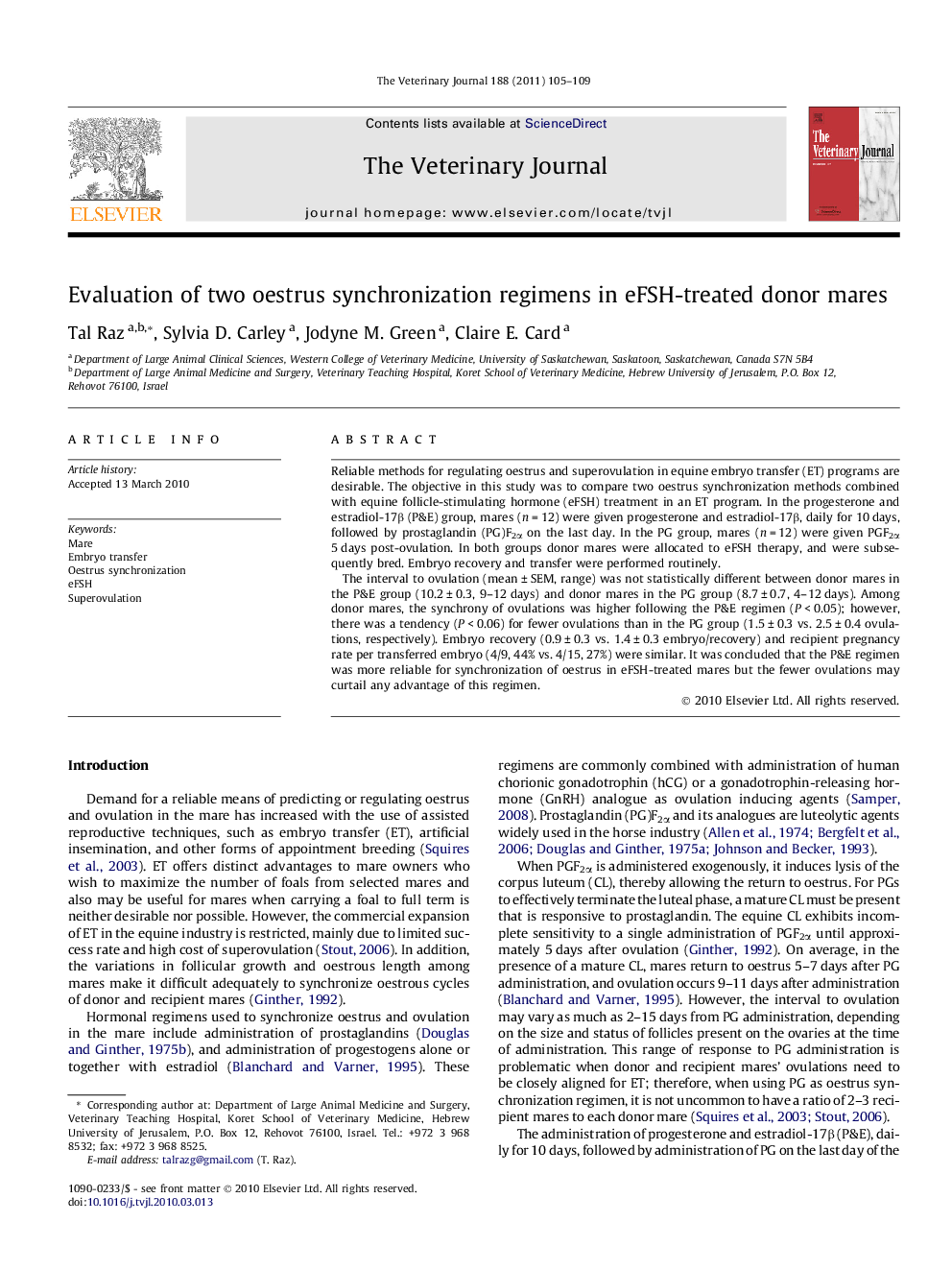| کد مقاله | کد نشریه | سال انتشار | مقاله انگلیسی | نسخه تمام متن |
|---|---|---|---|---|
| 2464636 | 1111802 | 2011 | 5 صفحه PDF | دانلود رایگان |

Reliable methods for regulating oestrus and superovulation in equine embryo transfer (ET) programs are desirable. The objective in this study was to compare two oestrus synchronization methods combined with equine follicle-stimulating hormone (eFSH) treatment in an ET program. In the progesterone and estradiol-17β (P&E) group, mares (n = 12) were given progesterone and estradiol-17β, daily for 10 days, followed by prostaglandin (PG)F2α on the last day. In the PG group, mares (n = 12) were given PGF2α 5 days post-ovulation. In both groups donor mares were allocated to eFSH therapy, and were subsequently bred. Embryo recovery and transfer were performed routinely.The interval to ovulation (mean ± SEM, range) was not statistically different between donor mares in the P&E group (10.2 ± 0.3, 9–12 days) and donor mares in the PG group (8.7 ± 0.7, 4–12 days). Among donor mares, the synchrony of ovulations was higher following the P&E regimen (P < 0.05); however, there was a tendency (P < 0.06) for fewer ovulations than in the PG group (1.5 ± 0.3 vs. 2.5 ± 0.4 ovulations, respectively). Embryo recovery (0.9 ± 0.3 vs. 1.4 ± 0.3 embryo/recovery) and recipient pregnancy rate per transferred embryo (4/9, 44% vs. 4/15, 27%) were similar. It was concluded that the P&E regimen was more reliable for synchronization of oestrus in eFSH-treated mares but the fewer ovulations may curtail any advantage of this regimen.
Journal: The Veterinary Journal - Volume 188, Issue 1, April 2011, Pages 105–109